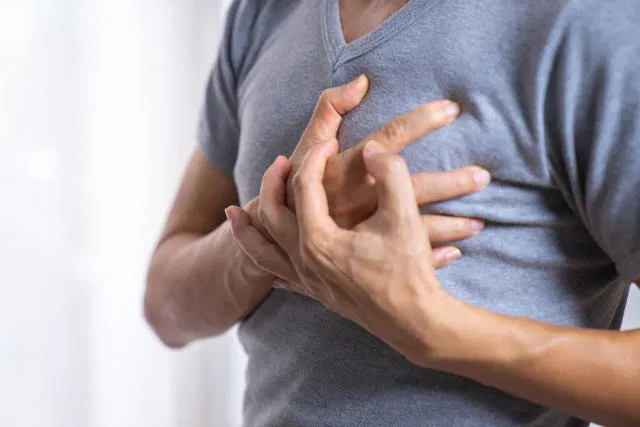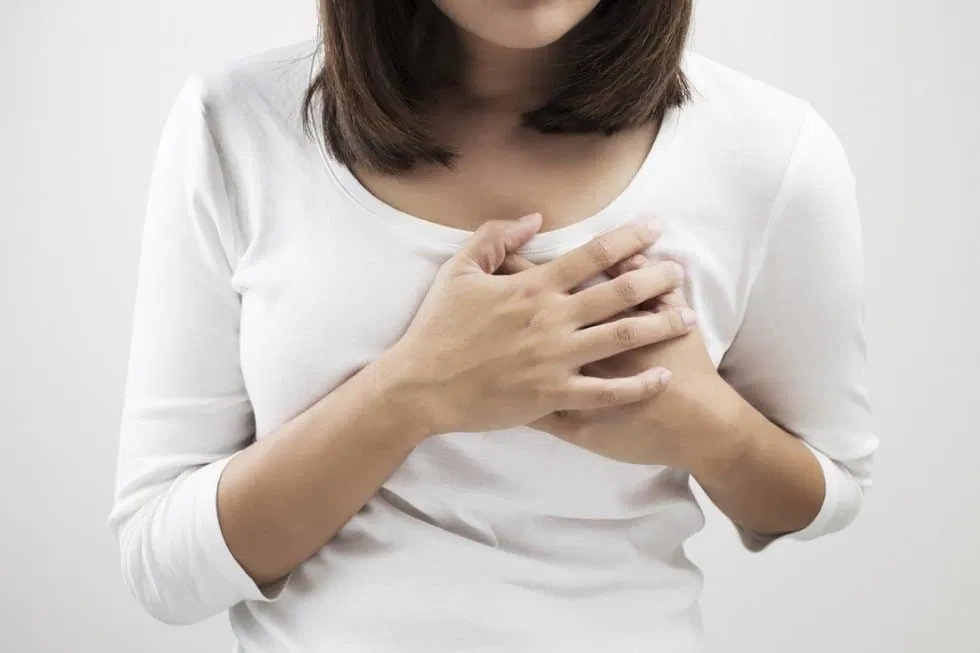Brea.st Can.cer: Symptoms and Causes

Brea.st canc3r is a kind of cancer that starts as a growth of cells in the breast tissue. After skin canc3r, breast can.cer is the most popular can.cer diagnosed in women in the United States. But breast can.cer doesn’t just occur in women. Everyone is born with some breast tissue, so anyone can get breast can.cer. Let’s explore the symptoms and causes of brea.st can.cer.
Types

-Angiosarcoma
-Ductal carcinoma in situ (DCIS)
-Inflammatory breast cancer
-Invasive lobular carcinoma
-Lobular carcinoma in situ (LCIS)
-Male breast cancer
-Paget’s disease of the breast
-Recurrent breast cancer
Symptoms
The can.cer can affect your breasts in different ways. Some breast canc3r signs are very different. Others may simply seem like areas of your bre.ast that look very different from any other area. But when it does, signals may include:
-A change in the size, shape or contour of your breast.
-A mass or lump, which may feel as small as a pea.
-A lump or thickening in or near your breast or in your underarm that persists through your menstrual cycle.
-A change in the look or feel of your skin on your breast or nipple. Your skin may look dimpled, puckered, scaly or inflamed. It may look red, purple or darker than other parts of your breast.
-A marble-like hardened area under your skin.
-A blood-stained or clear fluid discharge from your nipple
Other reasons of breast changes

Benign breast conditions
Many of these signs can also be resulted by benign (non-cancerous) breast conditions. The signs and symptoms of these conditions may include lumps, pain, or discharge from your nipples. Some benign conditions might show up on a mammogram.
Lifetime breast changes
Your brea.sts may feel different during your period. A pregnancy can also cause changes in your brea.sts. As you get close to menopause, you may check lumps or other differences in your breasts. Hormones, like birth control or hormone replacement therapy, can cause breasts to become more dense.
Stages of breast can.cer

Breast can.cer stages are:
Stage 0: The disease is noninvasive, meaning it hasn’t dispersed from your breast ducts to other parts of your breast.
Stage I: There are carcinogenic cells in nearby breast tissue.
Stage II: The cancerous cells have formed a tumor or tumors.
Stage III: There’s breast can.cer in nearby tissue and lymph nodes. Stage III is usually considered to as locally advanced breast can.cer.
Stage IV: Can.cer has developed from your breast to areas like your bones, liver, lungs or brain.
When to see a doctor
If you look for a lump or other change in your breast, make a meeting with a doctor or other healthcare professional. Report any changes in your breasts even if a recent mammogram showed there was no breast can.cer.
Breast cancer remains one of the most significant health challenges faced by millions of people worldwide, particularly women. However, advances in medicine, increased awareness, and early detection have dramatically improved survival rates and quality of life for many. Understanding breast cancer—its symptoms, causes, and stages—is crucial in empowering individuals to take control of their health. Regular self-examinations, routine mammograms, and medical check-ups form the backbone of early detection. Catching breast cancer at an early stage often means simpler treatment and a better prognosis.
Prevention also plays a vital role. Lifestyle choices such as maintaining a healthy diet, exercising regularly, avoiding tobacco, and limiting alcohol consumption can reduce the risk. Hormonal factors, family history, and genetics are also important to consider, which is why consultations with healthcare providers for personalized risk assessment are essential. For those with a family history or genetic predisposition, more frequent screenings or preventive measures might be recommended.
Support systems are equally important. The emotional and psychological impact of a breast cancer diagnosis can be overwhelming, not only for the patient but also for their loved ones. Access to counseling, patient support groups, and comprehensive care teams helps individuals navigate their journey with resilience and hope.
In summary, breast cancer is a complex disease that requires awareness, vigilance, and compassion. By educating ourselves and others, encouraging early detection, adopting healthy lifestyles, and fostering strong support networks, we can improve outcomes and offer hope to those affected. If you notice any changes in your breasts, do not hesitate to seek medical advice promptly. Remember, your health is your most valuable asset, and taking proactive steps today can make all the difference tomorrow.
